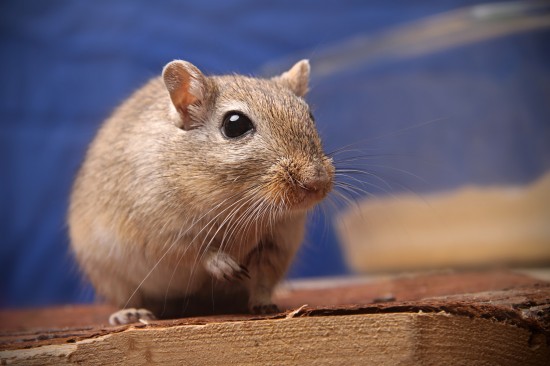
When Dr. Chambreau asks students in her classes if their companion animals are healthy, many people say their animals are healthy. After learning these early warning signs of illness, very few still think that their animals are healthy. Before you read more, do you think your horse, cat, dog or bird is healthy?
Healthy dogs do not need regular baths to get rid of the dreaded doggy smell on your hands, on your clothes and in your car. Cats, dogs and horses do not have dry globs of mucus in the corners of their eyes when they awake nor tears flowing down their faces (even Siamese or Maltese). Dogs do not eat dirt, dog stool or diapers, do not jump through windows when afraid of a thunderstorm nor destroy your house with separation anxiety. Cats do not vomit hairballs or drink water more than once a week. Go to www.ChristinaChambreau.com to see lots more of these symptoms.
Most health problems are the result of an underlying energy imbalance, made worse from poor diet and vaccination. You can prevent many illnesses and keep your dogs happily alive for many more years if you begin to treat when they show early hints of illness (and save a lot of money as well). As holistic practitioners cure animals of "disease", we find that certain other "normal" things go away, too. Do not stop your search for treatments (many of which you can do yourself) until most of these symptoms are gone. In young, apparently healthy animals, these apparently "normal" problems may be the only indications to start treatment or lifestyle changes. Many homeopathic and holistic practitioners with whom I have worked have contributed their observations.
So, how healthy is your dog, cat or other pet? Find a location with great light, preferably sunlight. Plan for about 30 minutes. Have a notebook or the Healthy Animal’s Journal and a pen at hand. Have a penlight or flashlight with you. Tell your pet that you will be petting and poking and looking at her and that it will be a lot of fun. Start anywhere you want on this list. Repeat this process until there are none of these signs, then every 6 to 12 months.
Eyes: Are the white parts (sclera) red and irritated? Does the center of the eye (pupil) seem dark black, or white? Do you see any discharges or tears? If so what color? Record if there was some other times of day as many animals have a little “crud” upon waking.
Nose: What is the color of the hairless area? Has there been a change, loss or darkening? Many dogs asking for a holistic approach to cure their autoimmune problems have had these nose changes slowly progressing for many years. Is there a discharge, even a clear one? Is there sneezing or itchiness? Many cats have a stuffy sound when they breathe from chronic viral infections.
Face & mouth: Is there excessive salivation or crusting around the mouth, especially in the corner? Even if you have a Saint Bernard or Great Dane, there should not be a lot of salivation. Look for a red line where the teeth go into the gums. This looks as if an artist painted a thin line. Check all the upper teeth/gum margins for this. It may be over one tooth or many. If you do see this, look for tarter on the teeth with the red line. If there is no tarter, check this red line at different times of the day and over the weeks to see if it gets bigger or smaller. Healthy dogs or cats do not get tarter and horses need infrequent teeth floating. Amy brought her Pug to me because he was biting his kennel mates and having diarrhea before shows, though he loved performing. After one dose of the right remedy the owner reported that the fighting and the diarrhea decreased. Two months later he was great and she was surprised when all the tarter fell off his teeth. He had already had dentals at 6, 12 and 18 months and had been ready for one just before taking the remedy.
Ears: Smell the ear and any discharges. Put a Q-tip or swab gently into the ear to look for deeper discharges. Healthy animals never need to have their ears cleaned and should not have the hair plucked. Once ears become a problem they can be hard to cure. Jessica noticed a small brown discharge on the ear flap, consulted an intuitive who said to stop all grains and fish in the diet. The ears did not progress to further problems. Every animal is different and these early discharges can be your clue to lowered health.
Skin & hair: Measure any lumps or warts so you will know that they are shrinking after your treatments. Is there a doggy odor? Healthy dogs never need a bath. Are there fleas or flea dirt? Many animals become naturally flea free after I have helped them become healthy, even in Florida. Healthy cats do not need to be brushed to prevent hair ball vomiting. Look for fleas. Is the coat greasy, dry, brittle or have an odor? Brush your hand over the coat firmly. Does a lot of hair shed out? Frequently, the first change seen when switching to a raw meat diet is a glowing coat and very little shedding.
Legs and feet: Notice any pain, lameness or nail problems. Giving a supplement for slight hip lameness is a Band-Aid and you need to be pursuing other treatments to deeply heal the early limping.
Energy: Energy levels should stay high throughout life. Many of my patients are over 10 and people think they are puppies.
Your wonderful animals can live much longer lives (small dogs to 20, medium to 18, large to 15 and giant to 12 or more, cats 27 – 30, horses to 30 or 40) if you use these early warning signs of illness to select the best lifestyle and treatment choices for each of them. Dr. Chambreau’s book, Healthy Animal’s Journal can help you track each symptom with each change you make so you can tell if you are finding the very best for each animal. It will soon be available for horses, too. www.HealthyAnimalsJournal.com
The best healing approach is one that looks at the whole animal and selects a team of healers who seem to produce the best results, ranging from conventional drugs to acupuncture to homeopathy to flower essences to Reiki and dozens more. Much you can learn to do yourself.
Have a great time learning how to tell how healthy your animals are.
 5 Popular Flat Faced Cat Breeds
5 Popular Flat Fa
5 Popular Flat Faced Cat Breeds
5 Popular Flat Fa
 The Core Personality Traits Of Herding And Shepherding Dogs
The Core Personal
The Core Personality Traits Of Herding And Shepherding Dogs
The Core Personal
 Foods That Are Safe For Your Gerbil
Foods That Are Sa
Foods That Are Safe For Your Gerbil
Foods That Are Sa
 How To Tell The Difference Between A Boston Terrier And A French Bulldog
How To Tell The D
How To Tell The Difference Between A Boston Terrier And A French Bulldog
How To Tell The D
 Do Hunting Dogs Make Good Pets?
Do Hunting Dogs M
Do Hunting Dogs Make Good Pets?
Do Hunting Dogs M
Copyright © 2005-2016 Pet Information All Rights Reserved
Contact us: www162date@outlook.com